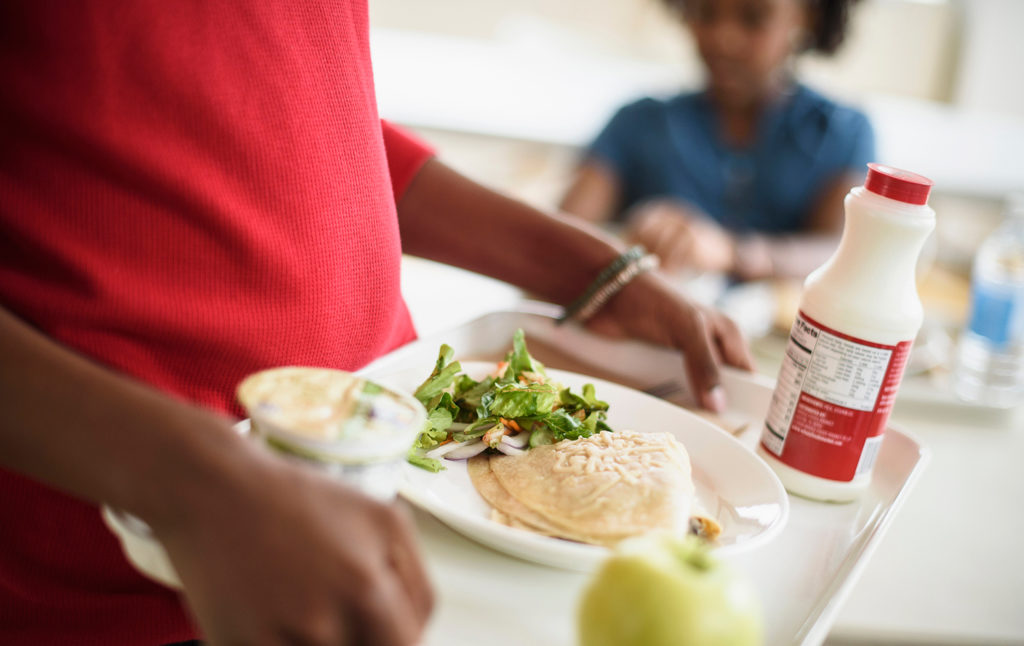Learning Curves
School Kids Suffer With the SNAP of a Finger
The Trump administration’s proposed food stamp cuts could have a cascading effect on California public schools.

From the afflict the afflicted and comfort the comfortable department: Thousands of needy California school kids may go hungry if Donald Trump is able to deny food stamps to 3.1 million Americans who are currently receiving SNAP benefits. That’s the estimated number of individuals who will be hit if tightened eligibility rules posted last month by the Department of Agriculture are adopted. The proposal would also stop states like California from extending benefits based on an individual’s net instead of gross income. Children who would no longer qualify for food stamps will also lose their automatic eligibility for free school meals, and by forcing parents to apply for reduced-price meals instead, the new rules would represent an administrative barrier that could result in a loss of benefits.
“Learning Curves” is a weekly roundup of news items, profiles and dish about the intersection of education and inequality. Send tips, feedback and announcements of upcoming events to braden@capitalandmain.com, @BillRaden. Abby Kingsley contributed to this column.
The change will also reduce the number of schools that meet the 40 percent eligibility threshold that currently allows all students at qualifying schools to get free meals regardless of family income. And in California, managing policy advocate for California Food Policy Advocates Jared Call warned EdSource, high needs schools will stand to lose extra funding tied to free or reduced-price eligibility under the state’s Local Control Funding Formula. The average SNAP household received about $253 a month in fiscal year 2018 — or roughly a third of the price to attend the Mar-a-Lago New Year’s Eve party that year.
Speaking of public ed inequities, researchers know that lower school funding equals fewer learning opportunities and worse student outcomes. Which is why many advocates see the stark funding disparities between a school in a rich neighborhood and one several miles away in a high-poverty zip code as a civil rights issue. But an analysis last week by the nonprofit news site Chalkbeat of recent studies underscores just how amplified those differences can get when the states that spend the least per student also serve more low-income students and students of color. Findings by the nonprofit EdBuild show a $23 billion disparity nationally between white-majority districts and those composed largely of students of color.
For California, which already ranks high among the states for serving low-income students and students of color but has languished in the national cellar for per-pupil funding, EdBuild calculated a $2,390 per-pupil spread between white and nonwhite districts — just above the national average of $2,226 — giving the Golden State the not so glittering ninth worst position. An earlier analysis by Education Trust that looked at district spending and characteristics across states found that the highest poverty districts in the country receive on average about $1,000 less per student than the lowest poverty districts.
The research is disheartening for majority-minority California, particularly in light of the increasing racial isolation that Latino students have have faced over the past generation. A new study by researchers at the University of California, Berkely, UC Irvine and the University of Maryland found that in 2015, the average young Latino attended an elementary school with an enrollment of only 30 percent white students — a full ten points below the 1998 average. The data echo other research showing that white and Latino students are the most segregated groups. The decline in diversity is worrying since studies have long demonstrated that whiter and wealthier enrollments translate into more resources and higher achievement and degree completion rates for black and brown students than at racially segregated schools.
Copyright Capital & Main

-

 Latest NewsDecember 10, 2025
Latest NewsDecember 10, 2025Capital & Main, L.A. Times Win Sidney Award for Reporting on Child Farmworkers
-

 Locked OutDecember 16, 2025
Locked OutDecember 16, 2025This Big L.A. Landlord Turned Away People Seeking Section 8 Housing
-

 Column - California UncoveredDecember 12, 2025
Column - California UncoveredDecember 12, 2025They Power the U.S. Economy, But Will Struggle to Afford Health Care
-

 The SlickDecember 19, 2025
The SlickDecember 19, 2025‘The Poor Are in a Very Bad State’: Climate Change Accelerates California’s Cost-of-Living Crisis
-

 Locked OutDecember 23, 2025
Locked OutDecember 23, 2025Section 8 Housing Assistance in Jeopardy From Proposed Cuts and Restrictions
-

 Column - State of InequalityDecember 11, 2025
Column - State of InequalityDecember 11, 2025A Little Place Called Home?
-

 Locked OutDecember 17, 2025
Locked OutDecember 17, 2025Credit History Remains an Obstacle for Section 8 Tenants, Despite Anti-Discrimination Law
-

 Latest NewsDecember 22, 2025
Latest NewsDecember 22, 2025Trump’s War on ICE-Fearing Catholics

